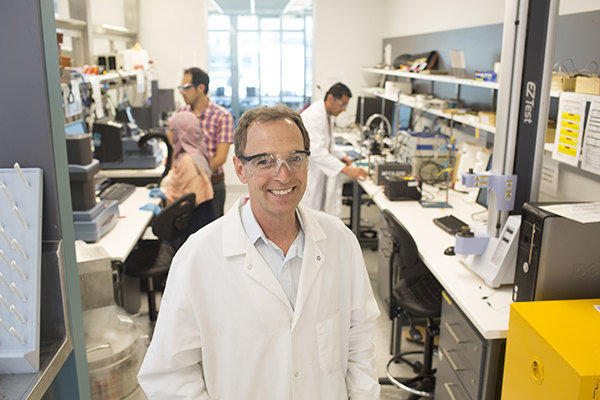February 21, 2014
Scientists create artificial muscles from fishing line
Ordinary, everyday fishing line has been used to produce artificial muscles with super-human strength.
By twisting and coiling simple fishing line and applying heat, powerful artificial muscles are produced that are capable of lifting one hundred times more weight and generate one hundred times higher mechanical power than human muscle.
The international journal Science has published a paper (February 21) in which University of Wollongong (UOW) and their international partner researchers explain that the coils can be powered thermally by temperature changes, by absorption of light, or by chemical reaction of fuels, causing the dramatic contraction and expansion of the coil.
Researchers have demonstrated the feasibility of using environmentally powered muscles to automatically open and close windows of buildings in response to temperature changes, replacing noisy and costly motors and eliminating the need for electricity. Other applications include areas in which function is limited by the size or cost of motors and hydraulic systems, such as robots, prosthetic limbs and exoskeletons.
Researchers from the ARC Centre of Excellence for Electromaterials Science (ACES) based at UOW worked on the project with collaborators across six countries, led by the University of Texas at Dallas.
The team worked for years on the concept of a twisting type of artificial muscle, initially working with more sophisticated materials including carbon nanotubes.
“Sometimes there is a great irony in research,” Professor Geoffrey Spinks, the lead Australian researcher on the project, said.
“After nearly two decades developing exotic materials as artificial muscles, we have now discovered that the best performing systems can be made from ordinary, everyday fishing line.”
Using the cheap and readily available fishing line, the process to convert to an artificial muscle is easy. Just start twisting.
“We attached one end of the fishing line to an electric drill and hang a weight off the other end to apply some tension. We stop the weight from rotating and we use the drill to insert twist into the fibre,” Professor Spinks said.
At a critical point, a loop forms in the fibre and further twisting produces more coils.
“Before too long, the whole fibre is a spring-like coil. To set this shape we apply a little bit of heat from a hair dryer and the coil contracts.”
Materials experts at ACES have been working on the process of weaving the single coils to produce useable fabrics including power-fabrics that contract in response to swelling or heat, and comfort-adjusting material with weave that can loosen or tighten according to temperature.
ACES Director Professor Gordon Wallace praised the efforts of the researchers involved in this long term collaboration with the University of Texas at Dallas
“This is an excellent example of how global research teams that are effectively integrated can have significant and wide-spread impact,” Professor Wallace said.
Other Australian based researchers from ACES on the project include ARC DECRA Fellow Dr Javad Foroughi and Dr Sina Naficy.
More information: electromaterials.edu.au.
Media contacts: Professor Geoffrey Spinks is available for interview. Contact Natalie Foxon Phillips, Communications & Media Officer, ARC Centre of Excellence for Electromaterials Science on +61 2 4221 3239, +61 2 414 550 278 or email nfoxon@uow.edu.au.
Watch: Animation of creating artificial muscles from fishing line.
